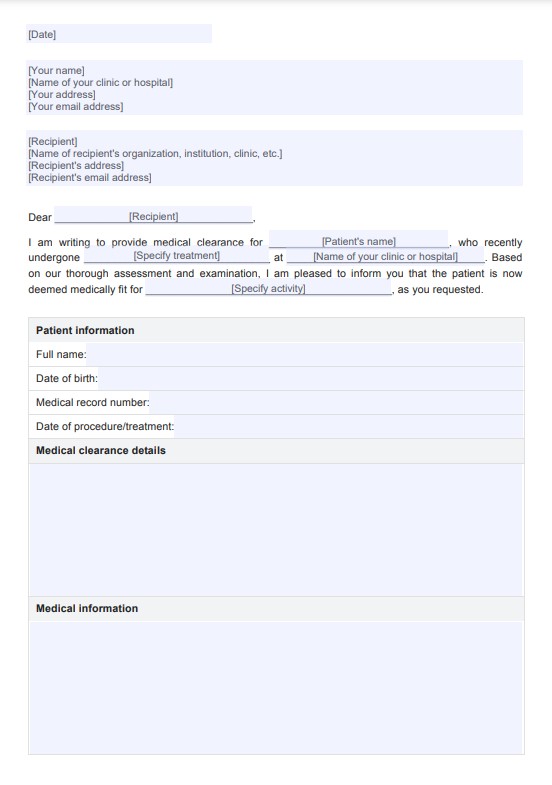A Medical Clearance Letter is a document a healthcare professional provides that states a patient has been reviewed and is considered fit for a specific medical intervention, such as heart surgery or other procedures. In the medical field, such letters are often required to ensure patients with health conditions can safely proceed with the desired medical care.

Medical Clearance Letter
Get a complete Medical Clearance Letter template with a detailed example. Download a free PDF to provide your patients with all the necessary information for medical clearances.
Medical Clearance Letter Template
Commonly asked questions
Given their health condition, individuals may need to be medically cleared before engaging in certain activities or treatments that could pose a risk. Examples include undergoing major surgery, starting a new exercise regimen, or participating in physically demanding events.
A Medical Clearance Letter typically includes the patient's name, a statement of their health condition, the healthcare professional's assessment of the patient's ability to undergo the procedure or activity safely, and any recommendations for care or restrictions needed.
EHR and practice management software
Get started for free
*No credit card required
Free
$0/usd
Unlimited clients
Telehealth
1GB of storage
Client portal text
Automated billing and online payments











